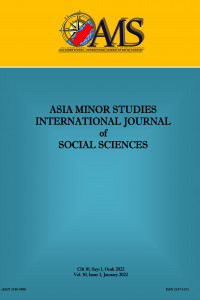Iran's Inner Conflict Risk Status
Iran's Inner Conflict Risk Status
Author(s): Mehmet Emin Sönmez, Yunus Emre SaraçSubject(s): Regional Geography, Politics and religion, Cultural Anthropology / Ethnology, 19th Century, Geopolitics, Asylum, Refugees, Migration as Policy-fields
Published by: Kilis 7 Aralık Üniversity
Keywords: Iran; Civil War; Conflict; AHP; Arc GIS;
Summary/Abstract: Throughout history, social events in different parts of the world for different reasons have brought along many changes and transformations. With the emergence of nation states, the internal fragility of the nation states has increased as a result of the drawing of new borders and the coexistence of different social, cultural, religious and economic groups within these borders. One of these countries is Iran. The fact that it has a wide variety of racial, linguistic, sect and economic groups and that it stands out with the Sunni states as the representative of Shiite Theopolitics in the Middle East and its opposition to the USA and Israel increases the risk of internal fragility, both internal and external support of Iran. Today, many different parameters can play a role in the basis of social movements that started largely on an economic basis. In this study, together with Iran's ethnic, linguistic and sectarian diversity, parameters such as the general poverty level of the people and the distribution of oil resources by the provinces were evaluated together with the AHP (Analytical Hierarchy Process) method and a provincial-based possible internal conflict risk map of Iran was created. Considering these maps, some suggestions were made for Iran and Turkey. Because, an Iranian civil war will cause refugees and border security problems for Turkey and the entire Middle East. As a matter of fact, for these reasons, it is extremely important to protect Iran's territorial integrity and internal unity.
Journal: Asia Minor Studies
- Issue Year: 2022
- Issue No: 1
- Page Range: 75-91
- Page Count: 18
- Language: English

